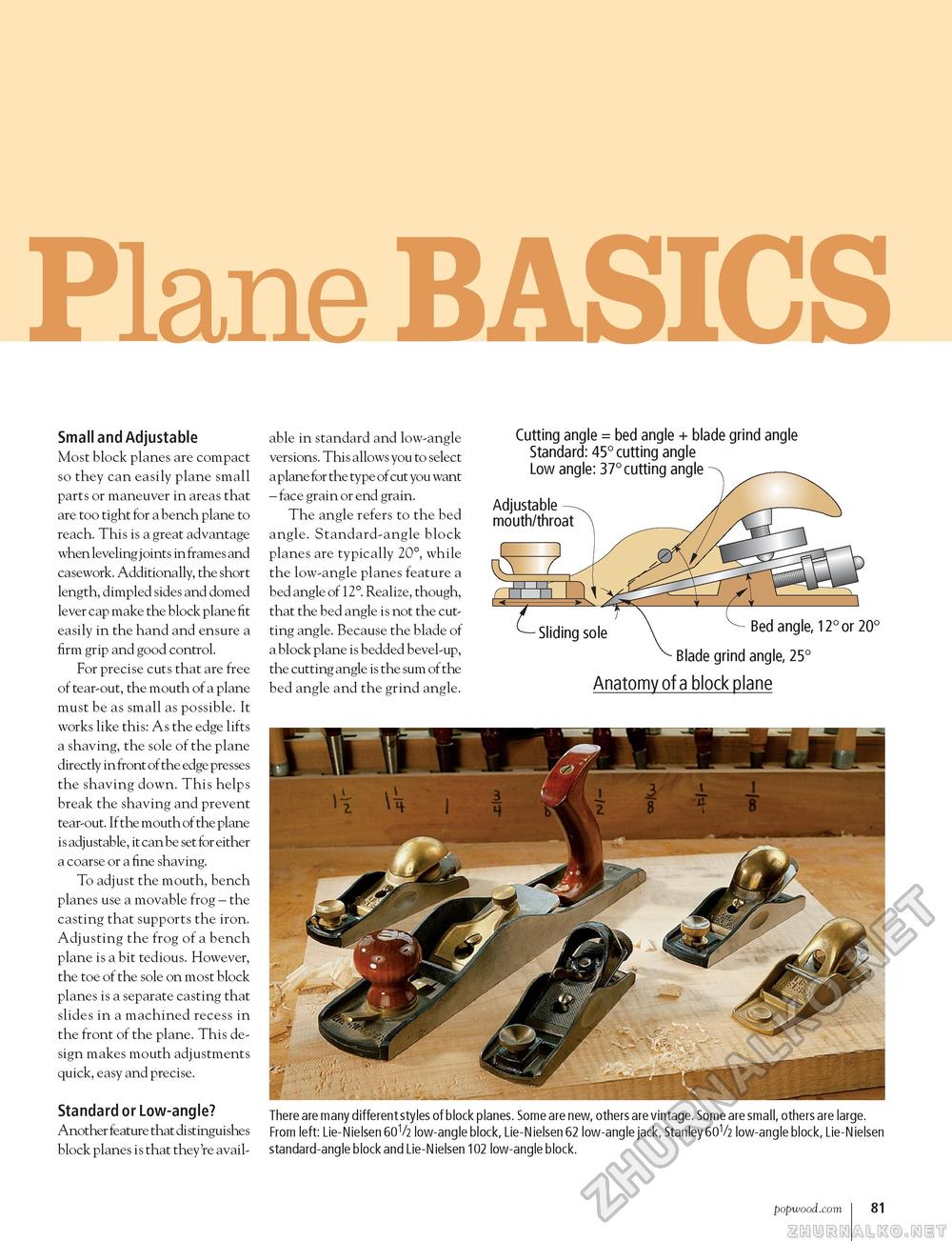Popular Woodworking 2004-10 № 143, страница 84
Plane BASICSSmall and Adjustable Most block planes are compact so they can easily plane small parts or maneuver in areas that are too tight for a bench plane to reach. This is a great advantage when leveling joints in frames and casework. Additionally, the short length, dimpled sides and domed lever cap make the block plane fit easily in the hand and ensure a firm grip and good control. For precise cuts that are free of tear-out, the mouth of a plane must be as small as possible. It works like this: As the edge lifts a shaving, the sole of the plane directly in front of the edge presses the shaving down. This helps break the shaving and prevent tear-out. If the mouth of the plane is adjustable, it can be set for either a coarse or a fine shaving. To adjust the mouth, bench planes use a movable frog - the casting that supports the iron. Adjusting the frog of a bench plane is a bit tedious. However, the toe of the sole on most block planes is a separate casting that slides in a machined recess in the front of the plane. This design makes mouth adjustments quick, easy and precise. Standard or Low-angle? Another feature that distinguishes block planes is that they're avail- able in standard and low-angle versions. This allows you to select a plane for the type of cut you want - face grain or end grain. The angle refers to the bed angle. Standard-angle block planes are typically 20°, while the low-angle planes feature a bed angle of 12°. Realize, though, that the bed angle is not the cutting angle. Because the blade of a block plane is bedded bevel-up, the cutting angle is the sum of the bed angle and the grind angle. Cutting angle = bed angle + blade grind angle Standard: 45° cutting angle Low angle: 37° cutting angle Adjustable mouth/throat Bed angle, 12° or 20° Blade grind angle, 25° Anatomy of a block plane There are many different styles of block planes. Some are new, others are vintage. Some are small, others are large. From left: Lie-Nielsen 60V2 low-angle block, Lie-Nielsen 62 low-angle jack, Stanley 60V2 low-angle block, Lie-Nielsen standard-angle block and Lie-Nielsen 102 low-angle block. popwood.com 81 |








